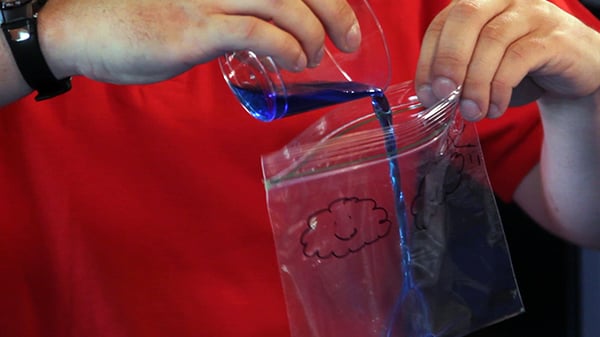It’s time to bid farewell to the snowflakes and get out our umbrellas -- spring is finally here! And as we all know, with April showers come May flowers...but where do those April showers come from, anyway? We’re here to help you out with a quick refresher on the water cycle just in time to make the most of those rainy days -- along with a few activities to make the time go by faster!
While it may seem hard to believe, most of the water we interact with is actually very, very old -- it’s just been continuously recycled! This cycle is made up of three parts -- evaporation, condensation, and precipitation.
Evaporation occurs when water is heated up and turned into vapor. Water evaporates off our skin when we sweat (or perspire), off plants when they transpire (which is what they do instead of sweating), and up out of lakes, rivers and streams. That vapor can hang in the air we breathe if the conditions are just right (which is how we get humidity), or it can rise up into the sky.

Once that vapor is in the air, it condensates -- it becomes cold, and turns back into liquid, forming clouds! You can observe condensation on a warm day -- pour yourself a glass of cold water, and watch as beads of water will form on the outside of the glass! That air is condensing in reaction to the coldness of the glass!
Finally, precipitation occurs when the clouds are so full of water that they can’t hold anymore, and they let the water fall back down to Earth -- depending on how cold it is, precipitation might take the form of rain, sleet, hail or snow.
You can make your own water cycle in the privacy of your own home, with minimal mess and no need to get out your galoshes! It's a water cycle in a bag!

You’ll need:
- Transparent tape
- A zipping plastic baggie
- A (thick!) marker
- Blue food coloring
- Water
Start by decorating your bag! You can decorate it however you’d like, but drawing the sun and some clouds at the top of the bag helps to illustrate the nature of the water cycle, and can help younger kids make the connection to the weather.

Next, add about an inch of water to your bag, along with a drop or two of blue food coloring. Zip your bag up tight, and stick it to a window that gets a lot of light using your tape!

Over the next few days, monitor the water in your baggie. Does it all stay in the bottom of the bag? You should notice that drops of water are accumulating up near the top of the bag -- that’s because they are evaporating thanks to the heat of the sun from the window! If you were able to replicate the conditions, you could turn that water into a cloud, next!

Look below for more fun projects to do on rainy days, and be sure to come back next month when we make good on those May flowers!






